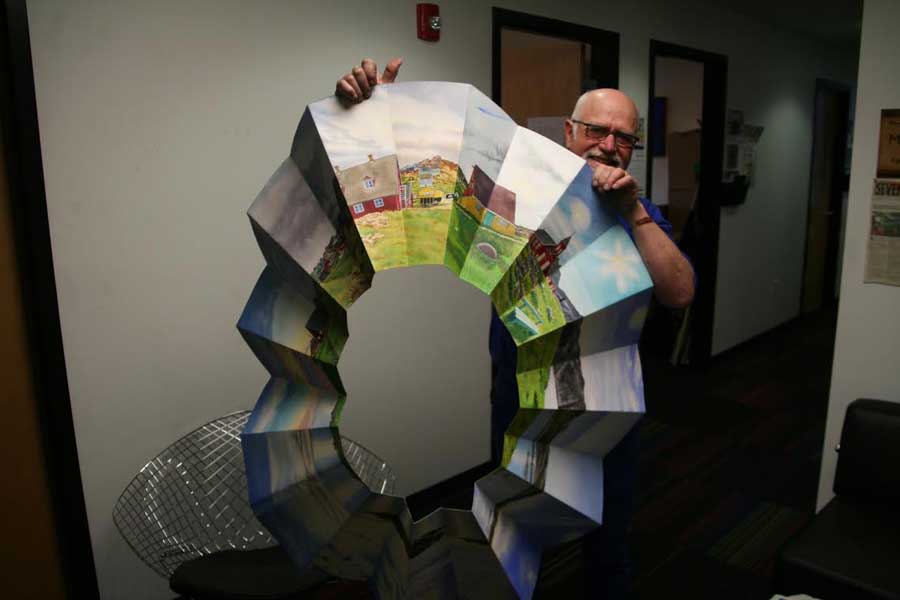Permafrost: not so permanent
Ken Leslie with his 360 degree panorama of Greenland’s Arctic sky
Kenneth Leslie, professor of fine art at Johnson State College, recently returned from Upernavik, Greenland, where he found reminders that global warming is both very real and very problematic.
Leslie has visited many arctic locations to paint landscapes in a 360-degree panoramic style that is both unique and imaginative. Through his visit to Upernavik and other arctic locations he has noticed that climate change has become an increasingly urgent issue for the communities in these areas.
Apart from their northern location, the communities’ cultural reliance on the climate makes the issue more pressing than it is at home in the U.S.
“A town like [Upernavik]—and this is the biggest town in a huge region—they have maybe 1000 people in it and then the next biggest town only has maybe 150 people,” said Leslie. “For these communities it’s harder to do hunting and fishing. No Inuit culture is vegetarian. In the summertime there are beautiful green passages but you really aren’t growing vegetables and fruit. The tradition is to subsist entirely on hunting and fishing.”
Leslie noted that as climate change shrinks the amount of time that the waters between the islands are actually frozen, the hunting and fishing seasons for local cultures are also reduced.
“Traditionally Inuit would eat seal, whale, narwhal, walrus, some caribou, and also fish. Just like polar bears that rely on ice to hunt, so do Inuit,” said Leslie. “The traditional way of hunting is to put nets under the ice and catch seal in them. You needn’t feel worried for the seal; there are as many seals in Greenland as there are deer here.
“The greatest evidence of the climate change is that their winter of reliability for the ice has really shrunk. They have only two months now where they can really count on the ice as opposed to six. And that’s up here [in Upernavik] not down south where it’s getting warmer and worse.”
Leslie has traveled to other arctic locations with his art projects, including northern Canada, Alaska, northern Scandinavia, and Svalbard. He has noticed the effects of climate change are more immediately apparent in these locations than in the mainland United States.
“The other interesting thing is that Upernavik is built on rock. So much rock that they actually have to put rocks over their dead rather than dig a hole,” said Leslie. “In other spots like Alaska, the houses are all built on permafrost—frost in the ground that never melts. But smaller towns are running into big trouble because the permafrost is melting and they have never had to worry about that before.
“People in the arctic are very much more aware of climate change. People here [in Vermont] can so cavalierly say, ‘Oh but I like the long summers,’ but their house isn’t sinking into the ground. The other thing that happens is that species who originally live in one place have to move further north… There is no question that [arctic communities] are much more affected by everything that is happening.”
Max Van Wie joined the Basement Medicine staff in Spring 2014, assuming the position of staff reporter.



